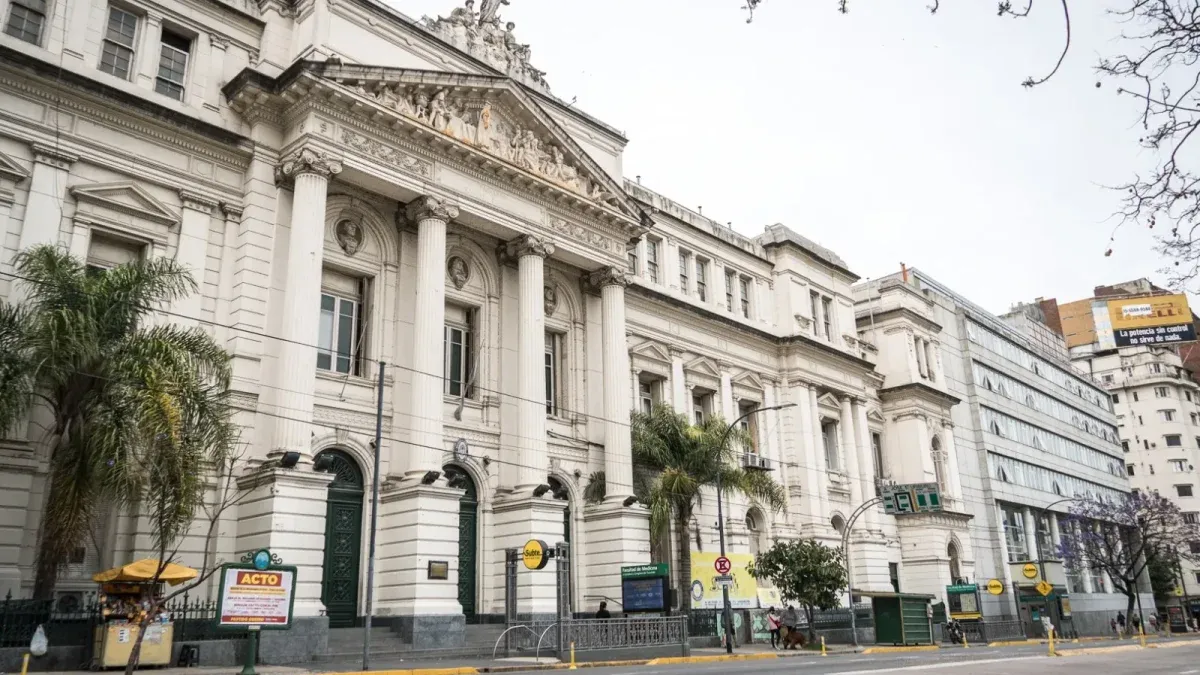The university is not just a group of researchers, it is a national project, it is one of the pillars of the Nation State. It is a project where, like all modern states in the last two centuries, they have outlined national development with their economic policy. Universities are the space for debate on politics and economics in a world that is constantly changing in technological and political terms. Will we be the world’s granary/supermarket or do we want to be the world’s workshop/hardware store? This was answered by David Ricardo and understood by his community. List in Germany or the Federals in the United States. Without technological, commercial and financial sovereignty, all that remains is to be an appendix to other economies. The university community, the business community and the State are organized to draw up the general guidelines for national development.
The 2023 Global Robotics Report “Asia ahead of Europe and the Americas” tells us that there are 553,052 industrial robot installations in factories around the world. China is the world’s largest market and the number of installations is increasing every year, with around 290,058 units. Half of the world’s total.
In this dynamic market, domestic and international robot suppliers have established production plants in China and continuously increased capacity (Report, 2023).
In the Asian giant, 1,000,000 engineers graduate every year. Can you imagine if China decides not to invest in its universities and community?
In the Americas, industrial robot installations increased by 8% to 56,053 units in 2022, surpassing the 2018 peak (55,212 units). USAthe largest regional market, accounted for 71% of installations in the Americas in 2022. The other two major markets are Mexicowhere installations grew by 13% (6,000 units), and Canada, where demand fell by 24% (3,223 units). This was the result of lower demand from the automotive industry, the largest adopter. Brazil is a major centre for the production of vehicles and car parts: the Organisation Internationale des Constructeurs des Vehicles Motors (OICA) reports a production of 2.4 million vehicles in 2022, demonstrating the country’s enormous automation potential (Report, 2023). In the case of this 2024 the main trends in robotics by 2024 are: 1) artificial intelligence (AI) and machine learning; 2) cobots; 3) mobile manipulators; 4) digital twins (tool to optimize the performance of a physical system by creating a virtual replica); and 5) humanoid robots.
Researchers as part of the Argentine community, before being researchers, are compatriots who, from the first years of schooling to university, when they decide to take on a role, studying the challenges of the peripheral productive structure with the aim of contributing to solving the dilemmas of national development and improving the conditions of the rest of the Argentine community, their objective is not just to sell “a book”. Other workers will decide on other roles (plumber, electrician, carpenter) in the community of equal or equal social importance. But without a productive sector there is no university either because they feed off each other. Otherwise the way is to import technology and not to manufacture. The way of science, technology and arts is to propose social problems to achieve steps towards engineering solutions.
In a recent forthcoming book, “Research as situated thinking” from the Institute for Studies for Productive Development of the National University of José C. Paz (IDEPI-UNPAZ), the authors Langer and Kodric in their article “Industrial and scientific-technological policy in peripheral economies. Strategies adopted throughout the 20th century and current challenges”, they tell how during the 21st century China had a growing tendency to increase its expenses in R&D. In 20 years it became the second country in the world that allocates resources in R&D concepts, surpassing the European Union. The United States has also increased its expenses in R&D since 2012. It is possible to think, then, that -as it was previously with the Soviet Union- both countries are in a race for technological dominance as a necessary condition for the installation of their economic hegemony at a global level. In fact, this week at the National University of José C. Paz the IV Conference “Democracy and Inequalities” will be held on September 12 and 13 where with more than 500 presentations, 32 working groups and 2 central tables the contributions and contributions to the economic, political and technological sovereignty of Argentina in the current world will be debated. Situated thinking. An effort of an entire community, teachers, non-teaching staff and students.
Therefore, in this complicated context it is relevant and worth remembering that the National Interuniversity Council warns of the critical situation of the university system:More than 85% of teachers’ salaries are below the poverty line. At the same time, more than 60% of non-teaching staff are in this situation.
A report prepared by UNSAM/UNRN allows us to graph the current situation “University salaries / July 2024”:
-92% of teachers without seniority earn a salary below the poverty line.
-87% of teachers with 10 years of experience earn a salary below the poverty line.
-79% of non-teaching staff without seniority earn a salary below the poverty line (categories 4, 5, 6 and 7).
-63% of non-teaching staff with 10 years of seniority earn a salary below the poverty line (categories 5, 6 and 7).
-More than 85% of university teachers live below the poverty line.
-More than 60% of non-teaching staff at universities are below the poverty line.
It is not only the situation of the group of researchers that is in danger and in a critical situation, but the Nation State, and the possibility of building solutions to mitigate the structural inequalities of the Argentine community. Faced with this situation and based on the University Financing Law that already has half sanction by the Chamber of Deputies of the Nation, the plenary of the CIN agreed on a university budget project for 2025 that contemplates reasonable increases for the normal functioning of the system next year. According to the fiscal impact of the draft Law under review on National University Financing, file CD14/24 establishes a recomposition of the salaries of teaching and non-teaching staff from 1/12/23 and until the project is sanctioned as law, taking into account increases already granted, and then a monthly update for inflation reported by INDEC. According to the Congressional Budget Office, the budgetary impact for the fiscal year was estimated at $738.595 billion, equivalent to 0.14% of GDP. According to a report by the UBA, With a fiscal effort equivalent to 0.14% of GDP, similar to the benefit granted to the wealthiest elites in the country and significantly lower than the industrial promotion regime in Tierra del Fuego (0.22% of GDP), it is evident that investment in higher education and science is relegated to the interests of the richest sectors.The latter had their tax rate reduced, going from representing 0.52% to 0.38% of GDP revenue.
Without science, technology and the arts there is no national project or productive system that contributes to the construction of national sovereignty, economic independence and social justice.
Economist from UBA and IDEPI-UNPAZ
Source: Ambito
David William is a talented author who has made a name for himself in the world of writing. He is a professional author who writes on a wide range of topics, from general interest to opinion news. David is currently working as a writer at 24 hours worlds where he brings his unique perspective and in-depth research to his articles, making them both informative and engaging.




